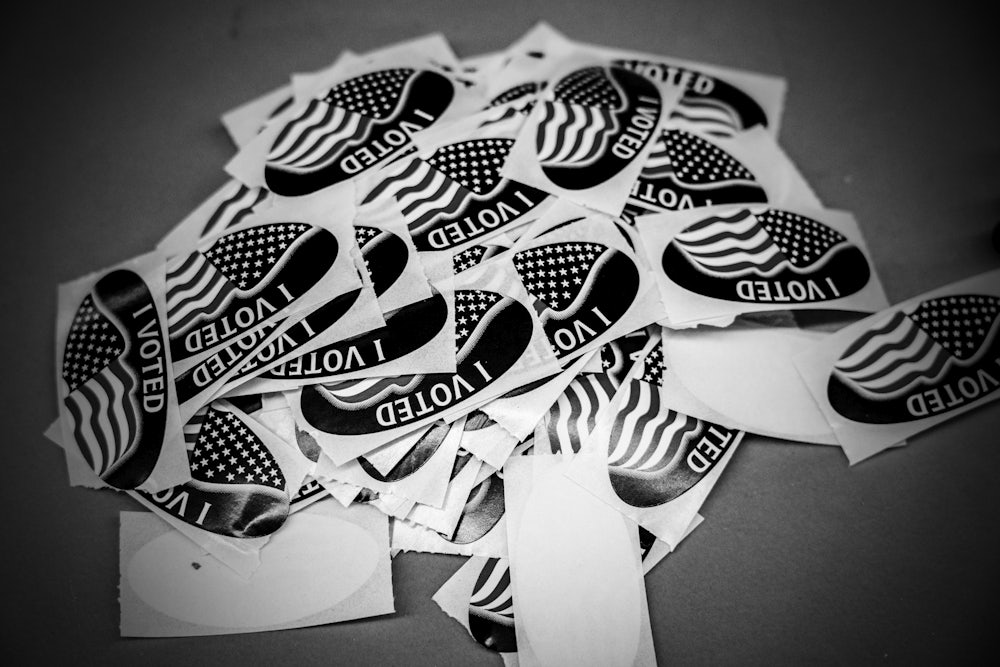It wasn’t supposed to be like this. Heading into Tuesday’s election, the public polling told the same story, over and over again. Joe Biden had a commanding lead in the national popular vote, somewhere between seven and 10 points. He was ahead in nearly every swing state, and trailing in several red-leaning states by a nose. There were many different ways for Democrats to win the presidency, whether via the Rust Belt, the Sun Belt, or maybe even a state like Texas. The Senate map looked similarly favorable for Democrats, who were also expected to pick up seats in the House.
Pollsters told us that they had learned the lessons from 2016. Yes, polling during a pandemic in the smartphone era was challenging, but this time they wouldn’t leave out non-college whites and Republicans, who had been undercounted by about five points the last time around. A 2016-style polling error, we were told, was unlikely. Biden’s lead was too great. He didn’t carry Hillary Clinton’s baggage. There was no 2020 equivalent of the Comey letter, which may have swung the election to Donald Trump. Some went as far as suggesting that an error was indeed possible, but in Biden’s favor. Bullish modelers, most notably The Economist’s G. Elliott Morris, saw a historic landslide on the horizon.
More than anything else, polling suggested a race with little turbulence. Biden’s lead was stable and consistent.
We do not yet know who will win the 2020 election. As of Wednesday, Joe Biden was in an enviable position, though the GOP’s legal machinery to suppress the vote has started to kick into gear. Still, it’s clear that the polling industry missed the mark by a wide margin and that, having royally screwed up the presidential election for the second straight time, it may never regain its credibility.
And now a look at how much Trump overperfomed the 538 averages in swing states:
— Josh Jordan (@NumbersMuncher) November 4, 2020
OH: +7
WI: +8
IA: +7
TX: +5
FL: +6
NC: +3
GA: +3
MN: +2
AZ: -1
A really rough night for polls and a disastrous night for certain pollsters such as Quinnipiac who showed Biden doing so much better.
President Trump dramatically overperformed expectations in nearly every swing state. The industrial Midwest, favored to easily swing to Biden, is in nail-biting territory. Wisconsin was favored to go to Biden by eight points—one ABC/Washington Post poll published late last month had the former vice president posting a 17-point lead. As of Wednesday, Biden had an edge of about 20,000 votes, less than 1 percent. The vote in Florida, Ohio, Texas—three states where Biden was seen as having a real chance before Election Day—wasn’t particularly close. Instead, the election is once again being decided by razor-thin margins in the Rust Belt.
The president is also overperforming the national polls. Despite typically polling in the 42–45 point range, he is expected to pick up about 48 percent of the popular vote—and win the second-highest popular vote tally ever (after Biden), besting even Barack Obama’s 2008 record.
Even without the full picture, the verdict has been damning. “The political polling profession is done,” leading Republican pollster Frank Luntz said on election night. “It is devastating for my industry.” The writers of Politico Playbook declared that “the polling industry is a wreck, and should be blown up.” The Atlantic’s David Graham concluded that it was “a disaster for the polling industry and for media outlets and analysts that package and interpret the polls for public consumption, such as FiveThirtyEight, The New York Times’ Upshot, and The Economist’s election unit.” From national polls down to the district level, the polls were just off.
And as a result, the entire narrative of the election was off, too. In 2020, the polls told a simple, coherent narrative about the president. Already deeply unpopular, he was now presiding over a botched response to a global pandemic. Voters were disgusted by his cavalier response and general noxiousness. Democratic gains in the suburbs would translate to an electoral landslide that would propel Biden to the presidency and expand Democratic congressional power. Biden may very well end up in an electoral position that some models predicted—between 290 and 310 electoral votes. But that discounts the fact that he is winning many battleground states by significantly lower margins than polls suggested—which means that what we know about Trump’s appeal, about the Democrats’ relationship to voters, and about the way voters feel about the most pressing issues of the day, all has to be reassessed.
There will undoubtedly be soul-searching and autopsies and lessons learned. We will be told, as we were after 2016, that these errors can be fixed, that the models were not actually as broken as they seem to be. But it’s obvious that the polling industry itself needs more than a few tweaks: These are systemic errors. This is an existential crisis.
If the polling industry is as broken as it seems, then we simply don’t have a good sense about what Americans actually think—a serious problem for a democracy, particularly one in the midst of a tailspin. Polls and forecasts also play a significant role in the coverage of elections themselves, in both obvious and subtle ways. Biden was presented as the clear front-runner for months. Trump, meanwhile, was presented almost as a lame duck whom voters had already rejected. It’s quite possible that this framing doomed congressional Democrats, with voters opting for a check on the front-runner’s power, as they did with Hillary Clinton in 2016.
The mainstream media, particularly cable news, is dependent on polls and forecasts being correct—it’s barely even possible to imagine a mainstream news environment without a heavy emphasis on polling. The biggest lesson from the immediate aftermath of the 2020 election is that the media needs to find a new model for covering issues and elections. Mea culpas from forecasters and pollsters won’t be enough this time.
